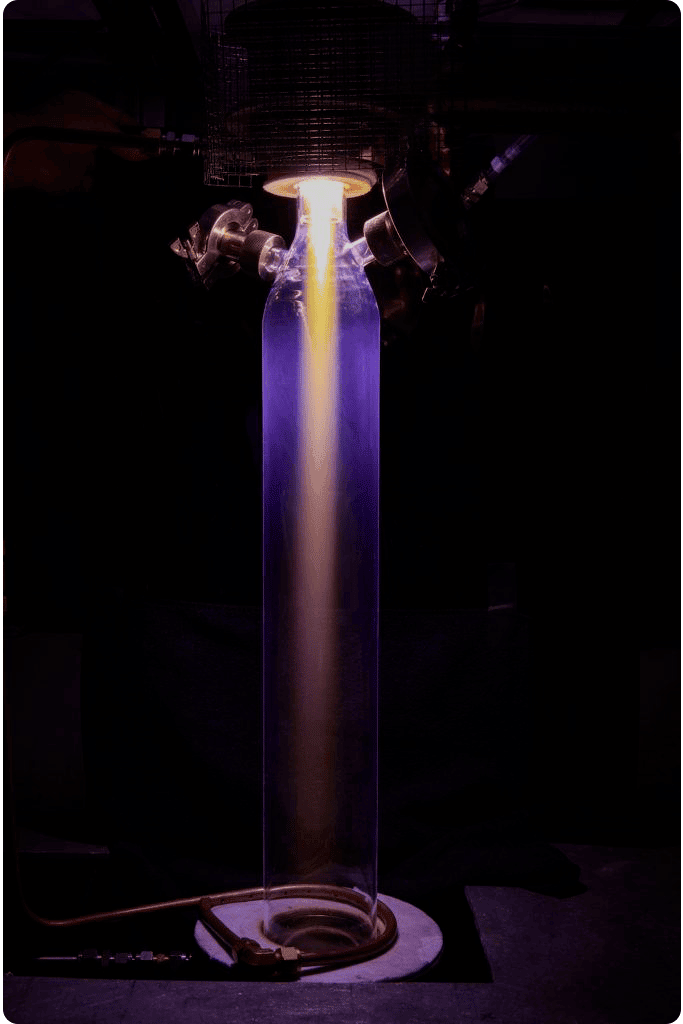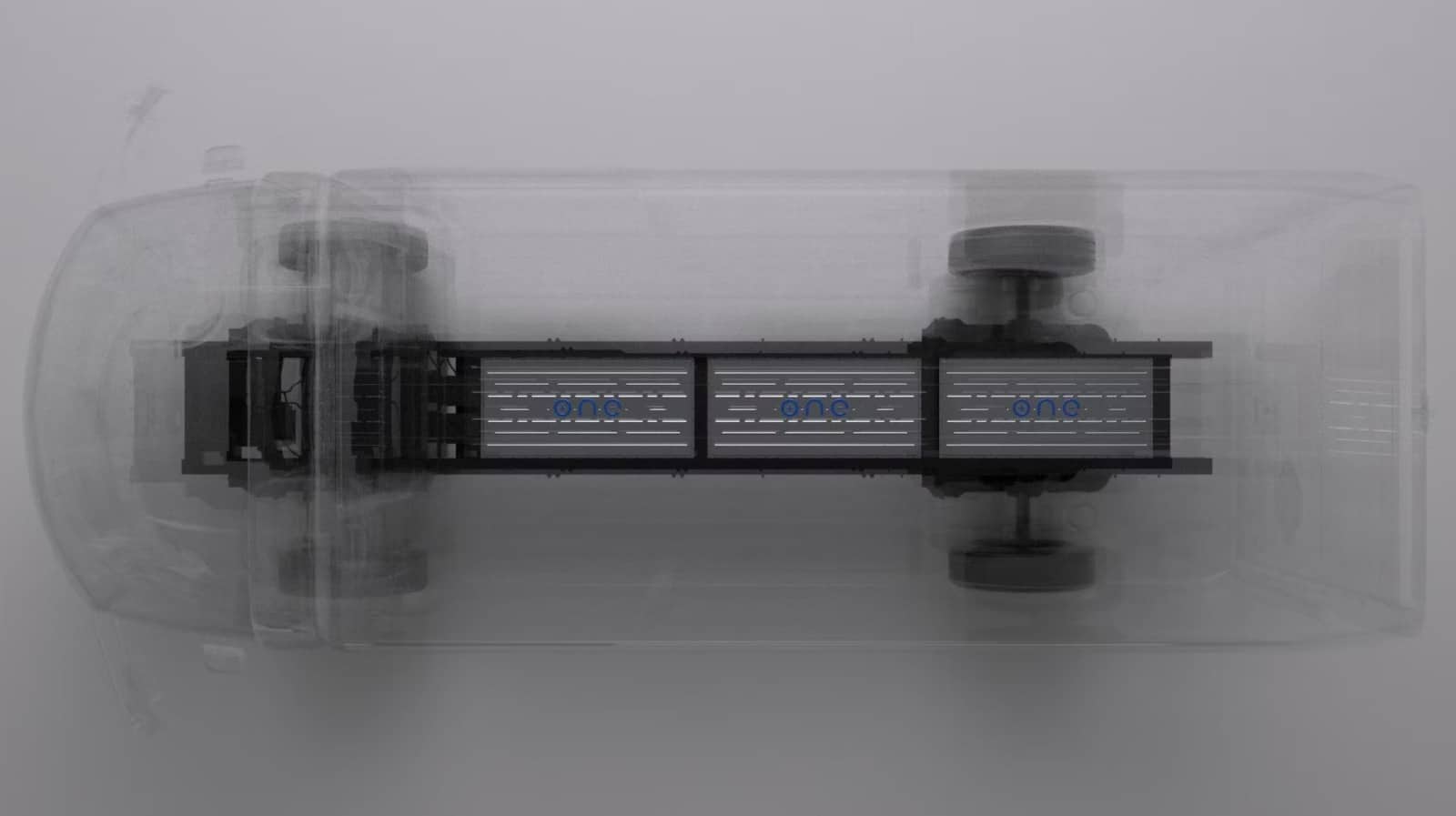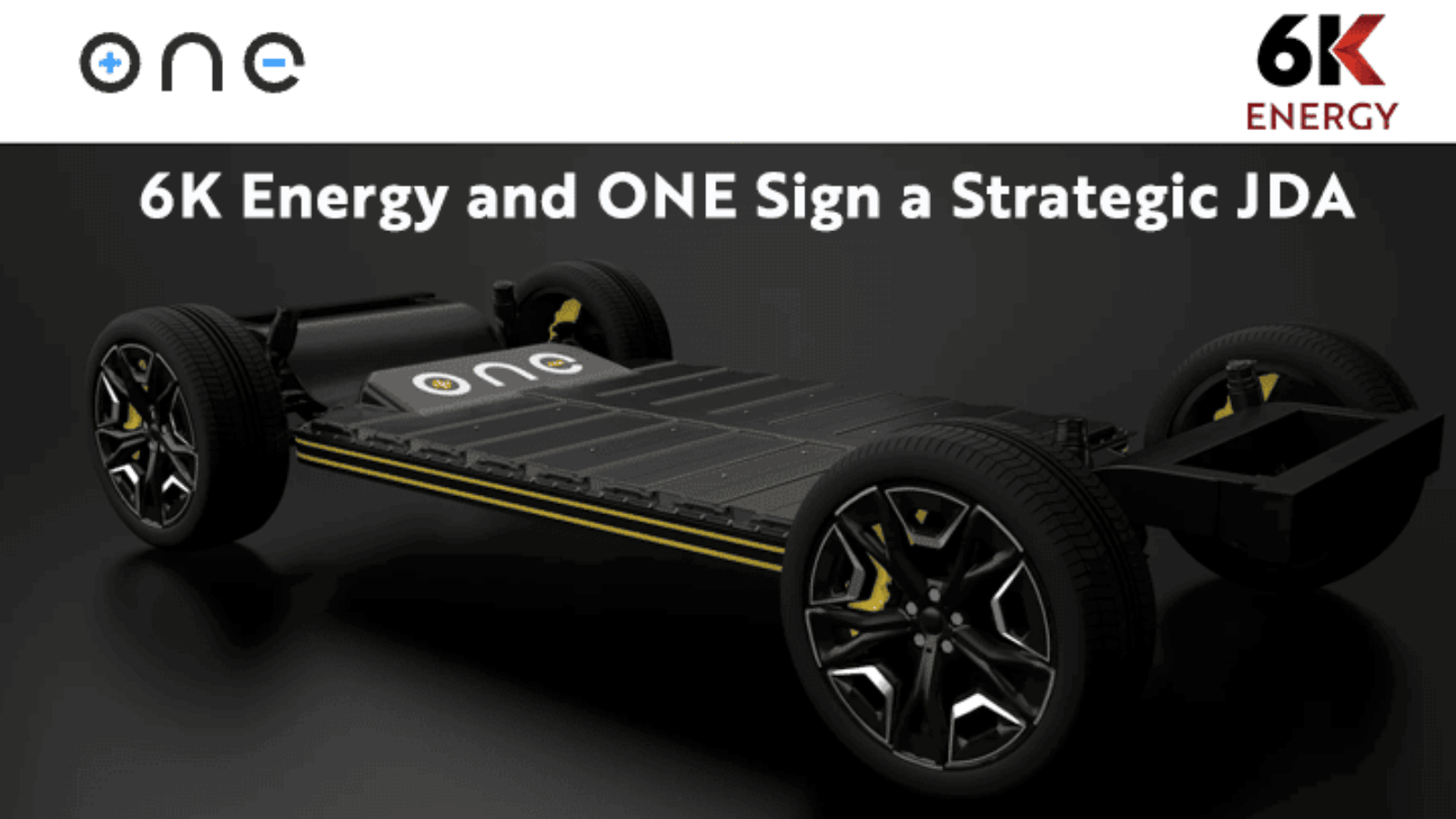6K Energy, a division of 6K, a leader in the sustainable production of engineered materials for lithium-ion batteries and additive manufacturing produced from its UniMelt plasma technology, has signed a joint development agreement with Our Next Energy (ONE) to develop and produce the critical battery material that ONE will use in their Gemini and Aries battery platforms. The agreement strengthens the procurement of domestically produced electric vehicle batteries for automotive OEMs manufactured by ONE, made with battery materials produced locally by 6K Energy. Both organizations are focused on supplying the industry with domestically-sourced batteries and battery materials while also lowering the environmental impact associated with traditional production technologies.
 6K Additive’s UniMelt microwave-based plasma technology
6K Additive’s UniMelt microwave-based plasma technology
“ONE is recognized in the industry as chartering exciting new milestones with their Gemini and Aries battery technologies,” said Sam Trinch, president of 6K Energy. “This agreement allows us to leverage the power of our UniMelt microwave plasma to extend performance of the chemistries, while keeping production on US soil.”
As part of the agreement, both organizations will work together on two chemistries that ONE intends to use in their battery platforms. The chemistries revolve around iron phosphate and manganese materials. A key element to the success of this agreement is the ability to leverage strategic partnerships both upstream and downstream in the supply chain, such as 6K Energy’s relationship with Albemarle, a leading global supplier of lithium, and ONE’s ongoing relationships with leading automotive OEMs. ONE recently signed an agreement with BMW Group to build a prototype vehicle that incorporates ONE’s Gemini Dual-Chemistry battery technology.
Manufacturing on Demand
Early collaboration will start in 6K Energy’s Battery Center of Excellence located in North Andover, MA, where both teams will work jointly on qualification and performance targets. The agreement outlines a path to scale production where 6K’s UniMelt technology would process cathode materials in ONE’s manufacturing plant.
“This agreement with 6K Energy represents an important milestone for both organizations. By onshoring our cell manufacturing and battery materials and implementing a localized supply chain, ONE will be able to reduce our products’ carbon emissions by 34%. Implementing 6K’s UniMelt technology will help ONE further drive down our emissions,” added Dr. Deeana Ahmed, Vice President of Strategy and Government Relations at ONE. “Since 2020, supply chain disruptions have underscored the importance of a domestic battery supply chain. The passage of the Inflation Reduction Act is vital for this partnership; the unprecedented incentives contained in the IRA will accelerate demand for American-made energy storage technology. The law will facilitate new partnerships that will define the next generation of manufacturing jobs.”

6K’s UniMelt system replaces a lengthy, multi-step, high-waste chemical process with one that is ultra-clean and ultra-fast (as low as 2 seconds), powered by a 6000K degree microwave plasma. Compared to state-of-the-art cathode active material (CAM) plants today, 6K Energy uses half the footprint, substantially lower CapEx, and has lower conversion costs. According to 6K, implementing a 6K Energy solution for CAM production in the US has the potential to save billions of dollars and eliminate solid and liquid hazardous waste while reducing water usage by 90%.
ONE is committed to achieving a considerable global, social, and economic impact on emerging markets by moving towards more sustainable supply chains, through two battery technologies – Aries, a high energy density LFP pack, and Gemini, a dual-chemistry battery technology that can achieve 600 miles range in passenger vehicles.
You might also like:
Citroën and BASF’s EV concept oli features 20 3D printed parts: With speed limited to 110 km/h (68 mph) and acceleration close to the classic 2CV model, the concept car gains a wider range and significantly improved battery lifespan. The minimalistic approach paved the way for a refreshing and innovative design. Various components have been radically reinterpreted and constructed by using materials in different contexts. For example, the complete backrest is made of a flexible 3D printed plastic material (Ultrasint TPU88A). The open lattice structure provides natural air flow, replacing all ventilators in the seat. For this, as well as to produce about twenty parts the competence of the 3D printing service office, Sculpteo in France, a brand of BASF, was used. And don’t bother looking for a sound or navigation system, because you won’t find one. After all, most customers have a mobile phone and portable speaker, which can be plugged in to the dashboard and automatically connected to the vehicle.
* This article is reprinted from 3D Printing Media Network. If you are involved in infringement, please contact us to delete it.
Author: Edward Wakefield


Leave A Comment